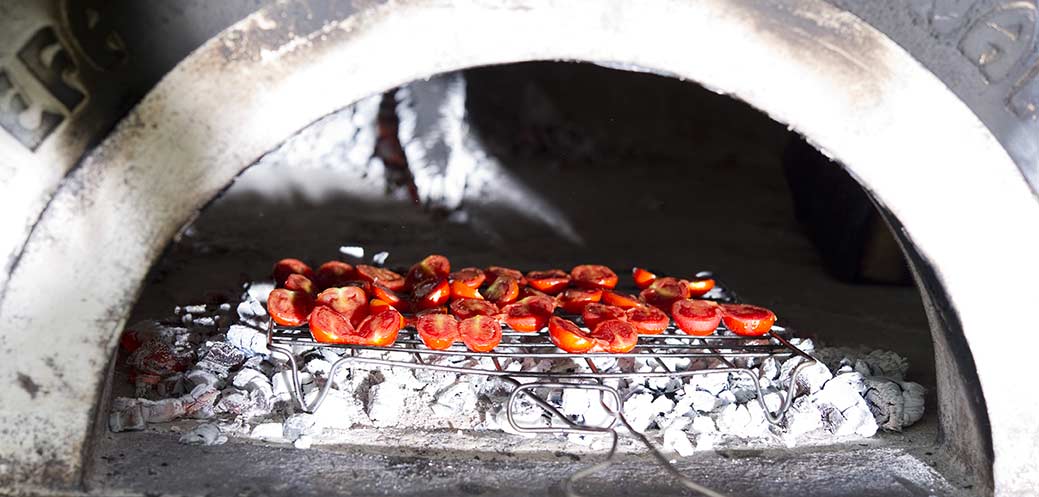by Enzo Coccia
During my investigation on the arrival of the tomato in Naples I came across Vincenzo Corrado’s book, entitled “Dal cibo pitagorico ovvero erbaceo per uso de’ nobili e de’ letterati”, written in 1781 and published by Edizioni Stamperia Raimondiana. Curios about it, I soon started to read up on the writer’s figure.
Vincenzo Corrado was born in 1736 in Oria in the province of Brindisi and when he was 38 years old he moved to Naples. He remained in our city for the rest of his life, until 1836 when he died at 100. He was a great man of culture and he distinguished himself as a gastronome and chef at the service of the noble families. And even the Prince of Francavilla assigned the office of “capo dei servizi di bocca” to him, that is the person who supervised the kitchen and the preparation of the meals as well as the organization of the banquets, in Palazzo Cellamare, on the hill of Mortelle.
Imagine my excitement behind this discovery. I was about to read the words of a man who marked the history of food and helped to enhance the great Italian regional cuisine. I couldn’t miss to read those pages and, much to my surprise, I just found some references to the tomato.
“These tomatoes – you can read in the book, translating it from Neapolitan into Italian – not only give taste to palate but, according to the physicists, facilitate the digestion with their acid juice, especially during the summer when the men fell disgusted for the excessive heat. They are little rounded tomatoes, saffron coloured, and to remove their peel you have to roll them on the embers”. Vincenzo Corrado defined them as “ tasty bites, universal sauce”.
Soon, I got the idea for a new pizza. Once more, I copied the recipe, l confess it, I could not resist the temptation to invent a pizza using exactly those tomatoes described by Vincenzo Corrado. I called it Pizza Procidana because in the summertime the island’s fishermen use to cook, outside their homes, the tomatoes on the charcoal which are then placed on warm and crispy slices of bread and dressed with a little of oil.
For all those who want to try their hands at preparing this simple and very tasty recipe at home, rewriting it in turn, which means handing down the tradition, here is the process.
Get:
15-18 tomatoes on the vine or datterini
80 grams scamorza
1 clove of new garlic or without buds
1 pinch oregano
Some parsley leaves
Some basil leaves
Top quality extra virgin olive oil
Sea salt
Turn the grill knob to halfway between low and high.
Halve the tomatoes. Put them on baking paper, add a drizzle of oil and bake them for a few minutes until they get the desired colour that we could define as “charred”.
Cut the scamorza into strips and the garlic clove into thin slices. Cut the parsley and the basil leaves as well.
Preheat the oven to 250°C.
Moisten the dough with a little oil and bake it for about per 15 minutes.
Later, put the scamorza strips and the little tomatoes on the pizza, sprinkle garlic and oregano on it too and bake for another 5 minutes: the pizza should be crispy and golden brown, the scamorza should be stringy and the tomatoes seared.
Once you take the pizza out of the oven, add parsley and basil and finish with a bit of oil.
But be careful, before you start don’t forget to make a well-leavened dough.




















